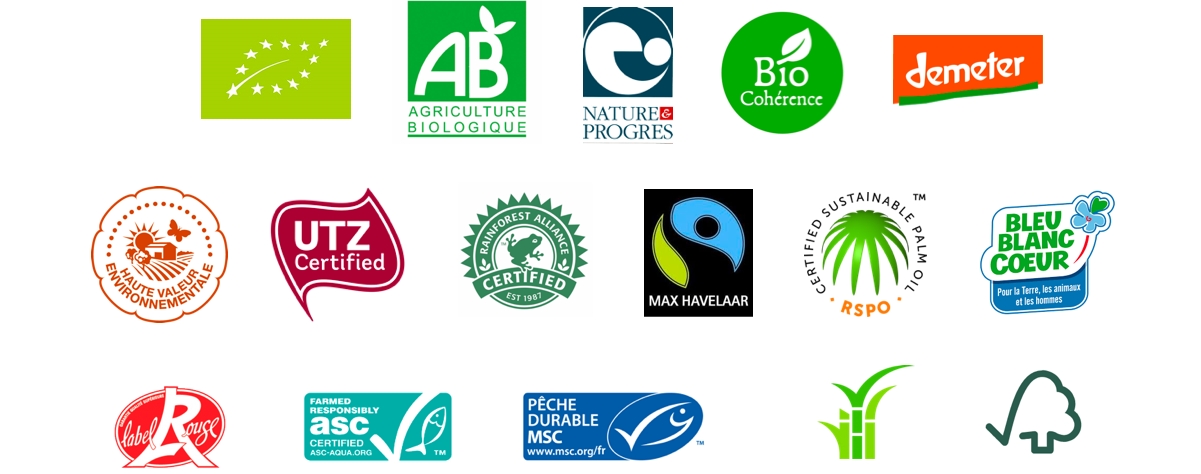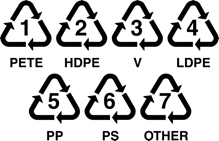Information to be collected
List of information needed to calculate the Green-score
Product category
The product's CIQUAL category is used to determine the Production score, derived from the Agribalyse 3 Life Cycle Analyses.
The product must be associated with the closest CIQUAL category, from among the 2497 categories available.
For example: a packet of "Prince de Lu, chocolate flavour" will be attached to the CIQUAL category "Pre-packaged dry chocolate biscuit".
Special cases
For reconstituted products (syrups, powders to be diluted), we will always consider the category representing the product "as consumed", reconstituted in water or milk. For example, for freeze-dried coffee, choose the CIQUAL category "Coffee, instant, unsweetened, ready-to-drink" instead of "Coffee, soluble powder".
For cooked products, we always consider their "raw" equivalent. For example, for a beef steak (15% fat content), choose "Beef, minced steak 15% fat content, raw" instead of "Beef, minced steak 15% fat content, cooked".
For foie gras, choose the CIQUAL category "Confit de canard" instead of "Foie, canard, raw".
Waters, soft drinks and raw fruit and vegetables are not covered by the Green-score. The methodology is not adapted to these product categories and could lead to misunderstandings.
List of ingredients
The list of ingredients can be used to detect the presence of high-impact ingredients such as palm oil or endangered fish.
Information on the origin of ingredients, or the percentage present in the recipe, can also be used to calculate the transport and origin score.
Origin of ingredients
The origin can be determined by any element present on the product packaging.
In particular, the following can be used
Origins present in the list of ingredients
Protected Geographical Indication (PGI)
Protected/controlled designation of origin (PDO/AOC)
Specific designations (particularly for cheeses) that guarantee an origin. Some examples: Greece for Feta, Italy for Parmesan, France for Camembert, Comté, Roquefort, etc.
In the absence of any indication, the supply commitments communicated by the brand may be used.
If no origin is available, the "World" origin is used for the ingredients concerned.
Special cases
EU and non-EU" origin corresponds to "World" origin
When the origin mentioned is "mainly" from one country, the percentages considered are: 50% from the country mentioned, 50% "World".
When the origin is available on a more global scale (region or continent), the lowest score of the country in the zone concerned is used. This avoids favouring overly generic designations ("Asia" origin vs. "China" origin, for example).
When the product is consumed reconstituted with water (coffee, tea, syrup, etc.), the transport & origin bonuses do not apply to the added water.
Percentage of ingredients
When the percentage of ingredients is indicated on the list of ingredients, it is used as is to calculate the transport and origin score.
However, for the majority of products, the percentage of each ingredient in the composition is not specified. In this case, the proportions of each ingredient can be estimated on the basis of the following elements: the product's nutritional table, the order of the ingredients in the list and the nutritional table for each ingredient.
This method gives an approximate percentage.
If an approximation is not possible, we will use the percentages given in the Agribalyse recipe for the product category.
Environmental labels
The labels are used to calculate the Labels, Packaging (FSC & BonSucro) and High Impact Ingredients (RSPO) scores.
The presence of the following labels must be collected:

Packaging
All the packaging components must be collected, with the following information for each one:
Format
The material
List of formats: Trays, Jars, Boxes, Bottles, Bricks, Cans, Preserves, Jars, Individual jars, Tubes, Sachets, Individual bottles, Individual sachets, Cases, Lids, Stoppers, Capsules, Lids, Sheets, Nets, Film, Bundles, Seals, Bulk.
List of materials:Steel, Aluminium, Glass, Brick, Multilayer, Carton, Paper, Kraft, Wood, Cork, Wax, Ceramic, PET, HDPE, PVC, LDPE, PP, PLA, PS, Other plastic
Special cases
Additional information to determine the recyclability of the packaging must be collected in the following cases:
Bottles: colour (clear, coloured or opaque), sleeve size (simple or covering)
Plastics: colour (transparent, clear or dark)
Characterisation of plastic
The plastic resin is determined by the presence of the following logos on the packaging:

In the absence of information, we consider the plastic resin "HDPE (2)" for plastic bottle caps, and "Other" (non-recyclable) for the rest.
Metal characterisation
The type of metal can be determined by the presence of the following logos on the packaging:

In the absence of information, we consider :
Aluminium for the following formats: trays, cans, bottles, coffee capsules, foils, lids, tubes and caps.
Steel for all other formats
Last updated